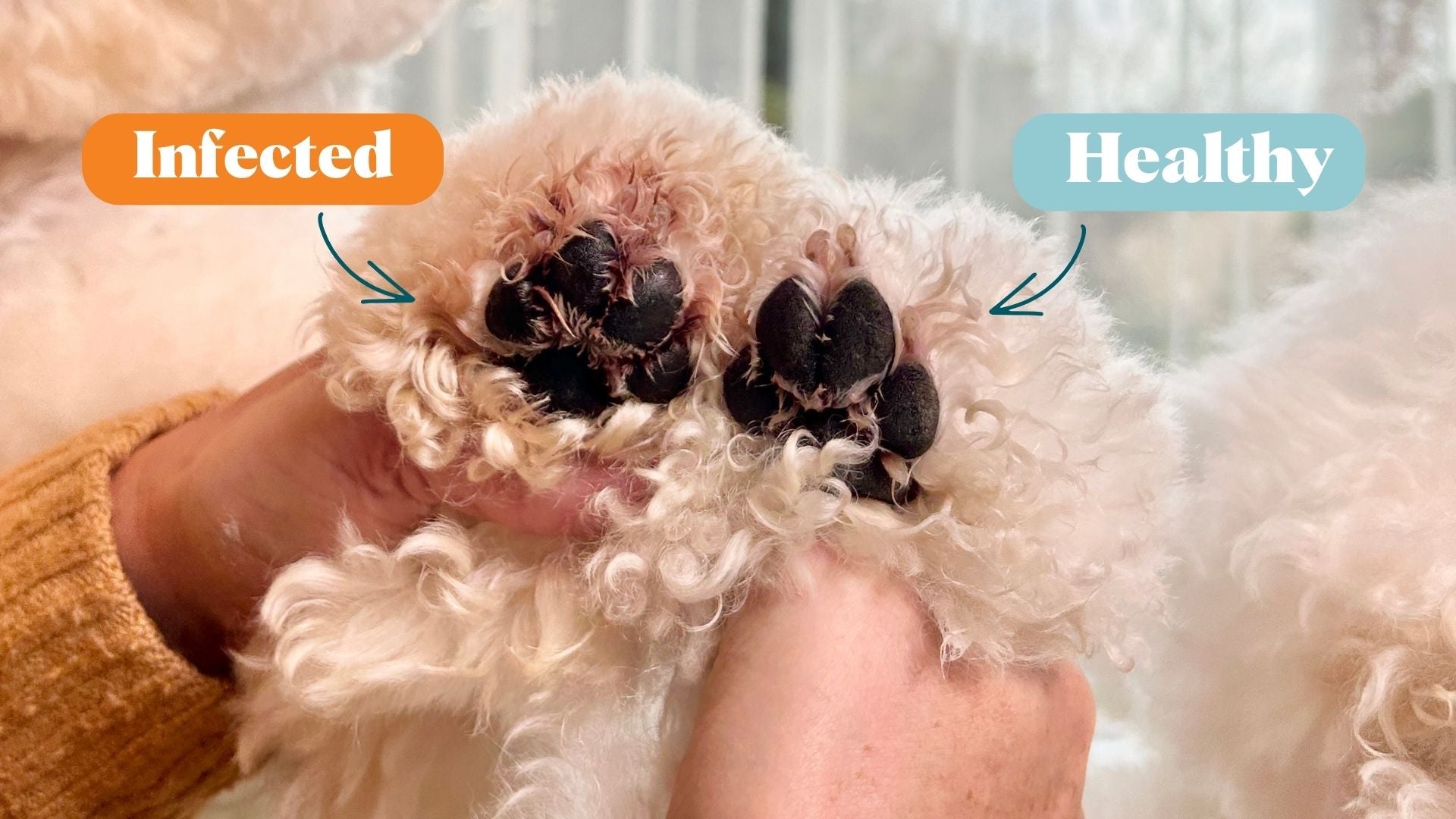Your cart (0 items)



Paws are more than just cute accessories to our furry friends—they're essential tools for mobility, exploration, and sensory perception. However, when paw health is compromised, it can lead to discomfort, pain, and even serious health issues. In this blog, we delve into the world of paw fungus, or brown paws, to uncover the potential dangers they pose to our pets. From recognizing the symptoms to implementing preventive measures and effective treatments, I'll equip you with the knowledge you need to safeguard your pet's paws and overall well-being.
Paw fungus, also known as paw dermatitis, can present with several symptoms indicative of an underlying issue. These may include:
These symptoms may vary in severity depending on the underlying cause of the paw condition and the stage of infection. If you notice any of these signs in your pet, it's essential to consult a veterinarian for proper diagnosis and treatment.

Preventing paw fungus is essential for maintaining your pet's overall paw health. Here are some practical steps you can take to keep your furry friend's paws safe:
By incorporating these preventive measures into your pet care routine, you can help safeguard your furry friend's paws against fungus and ensure they stay healthy and happy.
Treating paw fungus requires a systematic approach to eliminate the infection and promote healing. Here's a step-by-step guide to effectively treat paw fungus:
By following this comprehensive treatment regimen consistently, you can effectively eliminate paw fungus and provide relief for your pet's discomfort. Remember to monitor their paws closely for any signs of improvement or worsening and consult your veterinarian if necessary.
Keeping your pet's paws healthy is crucial for their overall happiness and well-being. By recognizing the signs of paw fungus, taking preventive steps like thorough drying and using alkaline water, and seeking timely treatment, you can protect your furry companion from discomfort and potential complications. Prioritizing proactive care ensures that your pet's paws stay in top condition, allowing them to enjoy a happy and active lifestyle.
FAQs
Q: What causes paw fungus in pets?
A: Paw fungus, often referred to as “brown paws," can be caused by various factors, including moisture accumulation between the toes, exposure to contaminated surfaces, and fungal infections.
Q: How can I prevent paw fungus in my pet?
A: To prevent paw fungus, ensure your pet's paws are kept clean and dry, especially after walks or outdoor activities. Use a rubber towel to absorb excess moisture and consider using alkaline water to inhibit the growth of harmful bacteria and fungi.
Q: Can fungal infections be treated at home?
A: Yes, mild cases of fungal infections, such as those affecting the paws, can often be treated at home with proper care and management. However, it's essential to consult with a veterinarian for guidance on the appropriate treatment plan, as severe or persistent infections may require prescription medications or professional intervention.
Q: What are the treatment options for paw fungus?
A: Treatment for paw fungus typically involves a combination of cleaning, drying, and applying antifungal solutions. Daily paw care routines, such as washing paws, drying them thoroughly, applying suitable topical treatments like Tauro Pro Line Elixir No.3, and using Pure Mist alkaline water for disinfection, can help alleviate symptoms and promote healing.
Q: Can paw fungus be harmful to my pet's health?
A: Yes, untreated paw fungus can lead to discomfort, pain, and further complications, such as secondary infections and skin irritation. It's essential to address paw fungus promptly to prevent it from worsening and impacting your pet's well-being.